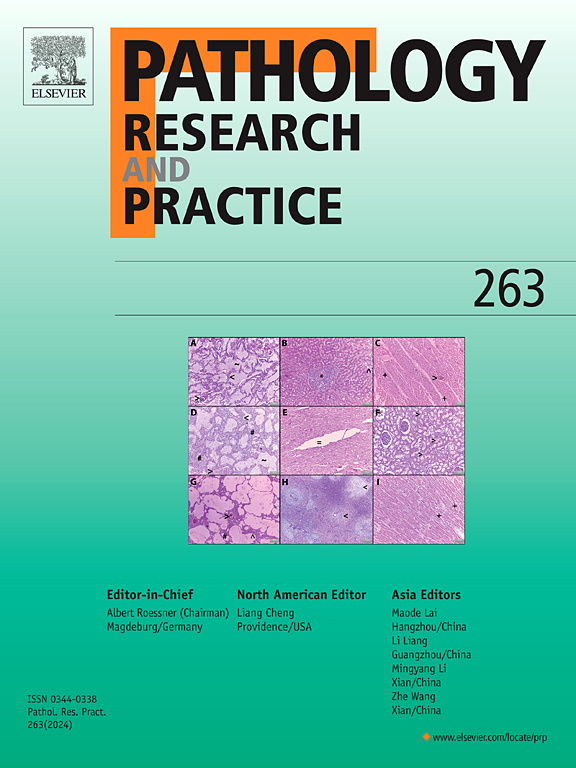WNT信号在甲状腺乳头状癌中的作用:机制、表观遗传调控、治疗耐药性和新兴临床策略
IF 3.2
4区 医学
Q2 PATHOLOGY
引用次数: 0
摘要
WNT信号是调节细胞生长、分化和组织平衡的关键途径。在乳头状甲状腺癌(PTC)中,规范(β-catenin依赖)和非规范途径的异常激活有助于肿瘤进展和治疗抵抗。这些机制包括降低对放射性碘(RAI)、激酶抑制剂和免疫疗法的反应。本文概述了WNT失调如何驱动上皮-间质转化(EMT)、癌症干细胞(CSC)可塑性等过程,以及与主要致癌途径(包括丝裂原活化蛋白激酶(MAPK)、磷酸肌肽3-激酶/蛋白激酶B (PI3K/AKT)和转化生长因子-β (TGF-β))的串扰。我们还研究了肿瘤微环境(TME)的作用,其中成纤维细胞来源的细胞因子和缺氧等因素增强了wnt驱动的耐药性。表观遗传修饰因子,外泌体WNT配体和非编码rna作为额外的调节因子出现。最后,我们讨论了临床意义,强调了WNT生物标志物在试验中的价值,以及将WNT抑制与RAI增敏、MAPK阻断或免疫检查点治疗相结合的潜力。本文章由计算机程序翻译,如有差异,请以英文原文为准。
The role of WNT signaling in papillary thyroid cancer: Mechanisms, epigenetic regulation, therapeutic resistance, and emerging clinical strategies
WNT signaling is a key pathway that regulates cell growth, differentiation, and tissue balance. In papillary thyroid cancer (PTC), abnormal activation of both canonical (β-catenin-dependent) and non-canonical pathways contributes to tumor progression and therapy resistance. These mechanisms include reduced response to radioactive iodine (RAI), kinase inhibitors, and immunotherapies. This review outlines how WNT dysregulation drives processes such as epithelial–mesenchymal transition (EMT), cancer stem cell (CSC) plasticity, and crosstalk with major oncogenic pathways, including mitogen-activated protein kinase (MAPK), phosphoinositide 3-kinase/protein kinase B (PI3K/AKT), and transforming growth factor-β (TGF-β). We also examine the role of the tumor microenvironment (TME), where factors like fibroblast-derived cytokines and hypoxia reinforce WNT-driven resistance. Epigenetic modifiers, exosomal WNT ligands, and noncoding RNAs emerge as additional regulators. Finally, we discuss clinical implications, highlighting the value of WNT biomarkers in trials and the potential of combining WNT inhibition with RAI sensitization, MAPK blockade, or immune checkpoint therapy.
求助全文
通过发布文献求助,成功后即可免费获取论文全文。
去求助
来源期刊
CiteScore
5.00
自引率
3.60%
发文量
405
审稿时长
24 days
期刊介绍:
Pathology, Research and Practice provides accessible coverage of the most recent developments across the entire field of pathology: Reviews focus on recent progress in pathology, while Comments look at interesting current problems and at hypotheses for future developments in pathology. Original Papers present novel findings on all aspects of general, anatomic and molecular pathology. Rapid Communications inform readers on preliminary findings that may be relevant for further studies and need to be communicated quickly. Teaching Cases look at new aspects or special diagnostic problems of diseases and at case reports relevant for the pathologist''s practice.

 求助内容:
求助内容: 应助结果提醒方式:
应助结果提醒方式:


